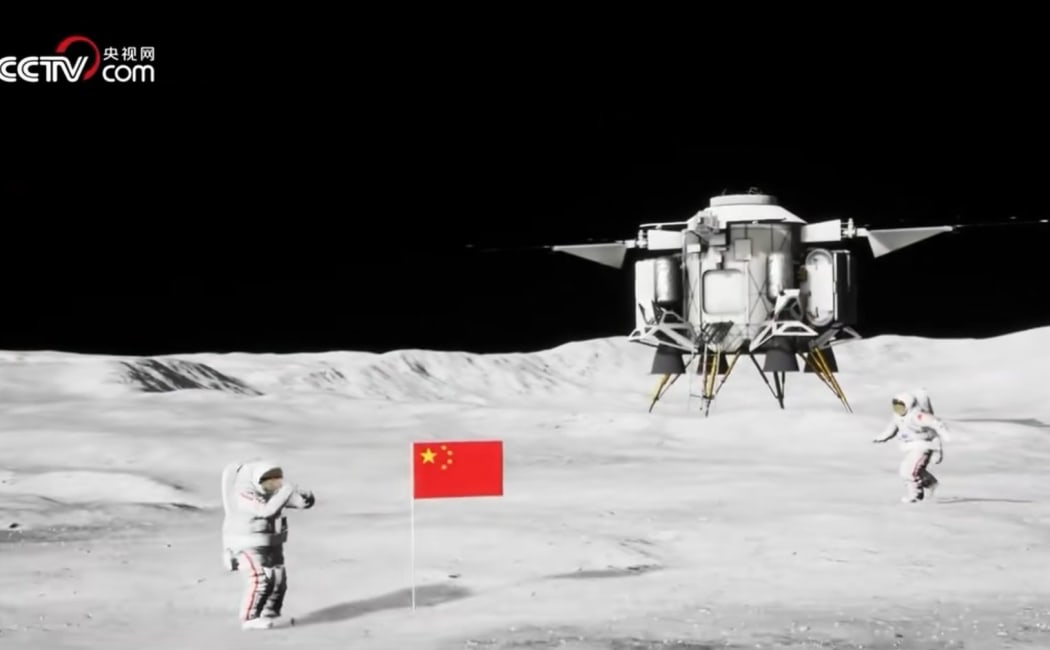China Successfully Tests Lunar Lander in Bold Step Toward First Manned Moon Mission by 2030

China's Lunar Ambitions Take Shape with First Manned Moon Mission Test
Beijing, China – In a groundbreaking achievement, China has successfully conducted its first test of a manned lunar lander, marking a pivotal moment in the nation’s ambitious plan to send astronauts to the moon before the year 2030. The test, carried out on Wednesday, was announced by the China Manned Space (CMS) program on Thursday, showcasing significant progress in the country’s lunar exploration roadmap.
Simulating the Moon’s Surface in Hebei Province
The test took place at a specially designed facility in Hebei province, built to replicate the challenging terrain and environmental conditions of the moon. The simulated lunar surface featured a special reflective coating to mimic lunar soil properties and was dotted with artificial craters and rocky formations to recreate realistic landing conditions.
According to CMS, the trial thoroughly examined the lander’s ascent and descent systems under multiple operational scenarios. This included testing in varying gravitational simulations, landing angles, and operational complexities. CMS officials described the trial as a “critical milestone” in the development of China’s manned lunar exploration capabilities.
Lanyue – “Embrace the Moon”
The lunar lander, named Lanyue (Mandarin for “embrace the moon”), is designed to carry astronauts between the lunar orbit and the moon’s surface. Beyond transportation, Lanyue will also serve as a temporary habitat for astronauts, a power supply hub, and a command and data center during surface operations.
With these multi-functional capabilities, the lander is seen as the backbone of China’s future manned missions, ensuring astronauts can safely land, live, and conduct scientific research on the moon.
A Competitive Space Race with the United States
The announcement comes at a time when the United States and China are locked in a high-stakes competition for lunar dominance. NASA’s Artemis program plans to send astronauts on a lunar flyby in April 2026, followed by a crewed moon landing in 2027. China’s latest test indicates that it is on track to meet — or potentially surpass — its stated goal of a manned lunar landing before the end of this decade.
While NASA has been transparent about its timeline and technology, China has largely kept its manned lunar program details under wraps, revealing only selective milestones such as the recent Lanyue test.
Proven Track Record in Uncrewed Lunar Missions
China’s growing confidence in its lunar program stems from its string of successful uncrewed missions over the past five years. It remains the only nation to have retrieved lunar soil samples from both the near side and the far side of the moon — a feat that has strengthened its reputation as a serious contender in space exploration.
These missions have also drawn international collaboration and interest. Institutions such as the European Space Agency, NASA-funded research universities, and national space agencies from countries including Pakistan and Thailand have engaged in cooperative projects with China’s space program.
Looking Beyond 2030 – Building a Lunar Research Station
China’s aspirations do not stop at landing astronauts on the moon. By 2035, the country aims to establish a “basic model” of the International Lunar Research Station, a joint project led by China and Russia. This permanent base would serve as a hub for scientific experiments, resource extraction, and long-term lunar habitation.
One of the most ambitious aspects of this project is the planned installation of a nuclear reactor on the moon’s surface to provide a stable power supply. Such infrastructure could revolutionize human ability to live and work in extraterrestrial environments for extended periods.
Significance of the Lanyue Test
The successful test of the Lanyue lander demonstrates China’s technical readiness and determination to achieve its lunar goals. The evaluation involved complex engineering challenges, including fuel efficiency for lunar gravity, precision landing technology, and robust safety systems to protect astronauts during both descent and ascent phases.
“This trial was not just a demonstration — it was proof that our systems can handle real lunar conditions,” a CMS spokesperson said. “Every step we take brings us closer to placing our astronauts on the moon and establishing a sustainable presence there.”
Global Implications of a Chinese Manned Moon Landing
If China succeeds in its manned moon landing before 2030, it would become only the second nation after the United States to achieve this milestone. This would not only boost China’s prestige on the global stage but also have strategic implications for future lunar resource rights, scientific leadership, and space-based technology advancements.
Space policy analysts have noted that the success of such missions could lead to a shift in international space cooperation and competition, particularly as more nations look to the moon for resources such as water ice and rare minerals.
The Road Ahead
While the Lanyue test marks a significant leap forward, several more stages remain before China’s dream of a manned moon landing becomes reality. Upcoming phases include full integration testing with crew life-support systems, long-duration lunar simulations, and final safety certifications for human spaceflight.
With both NASA and China pushing forward at an unprecedented pace, the next few years promise to be some of the most exciting in the history of space exploration. For now, China’s first successful lunar lander test stands as a testament to its technological innovation, strategic vision, and unyielding ambition to “embrace the moon.”
